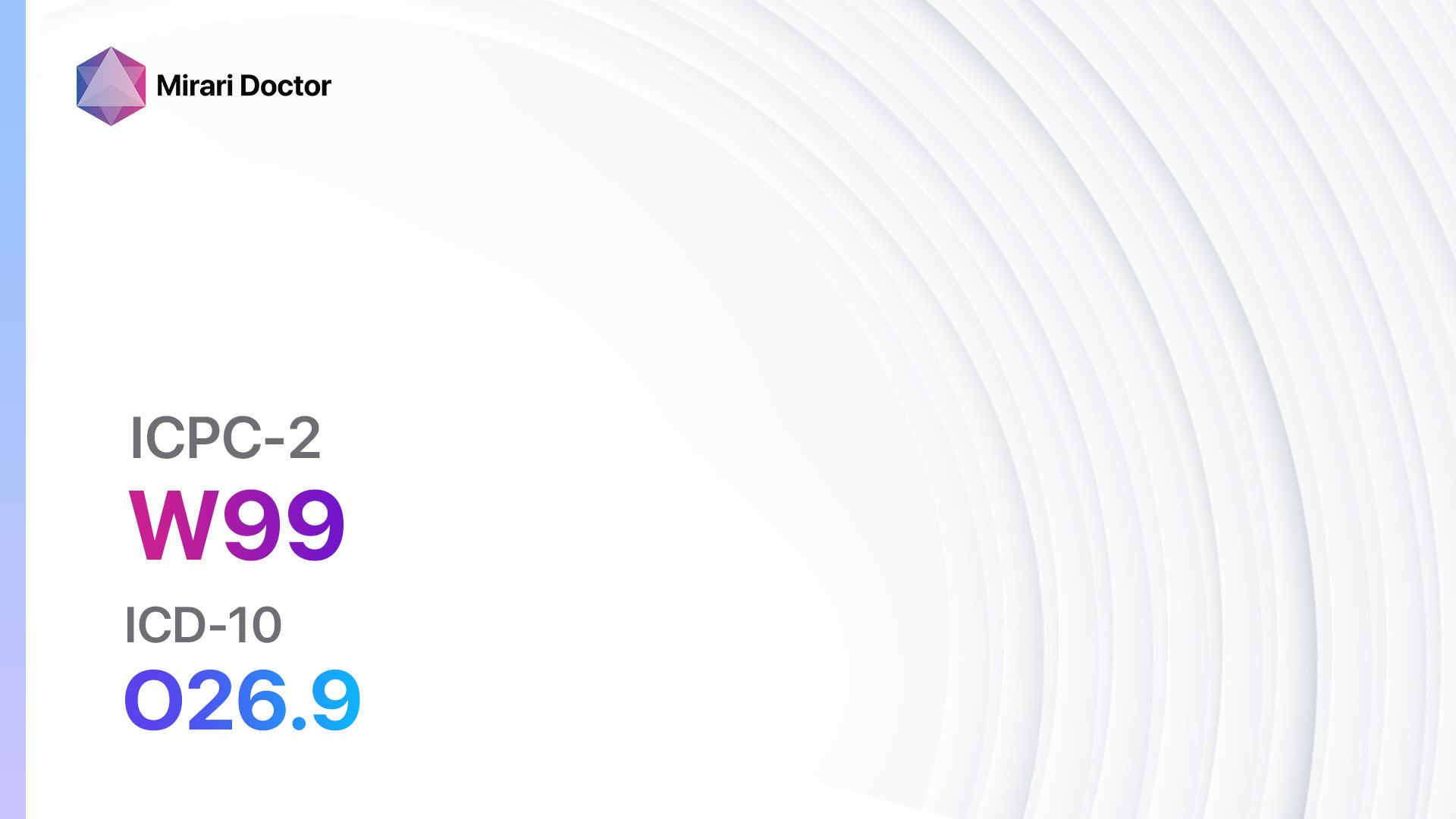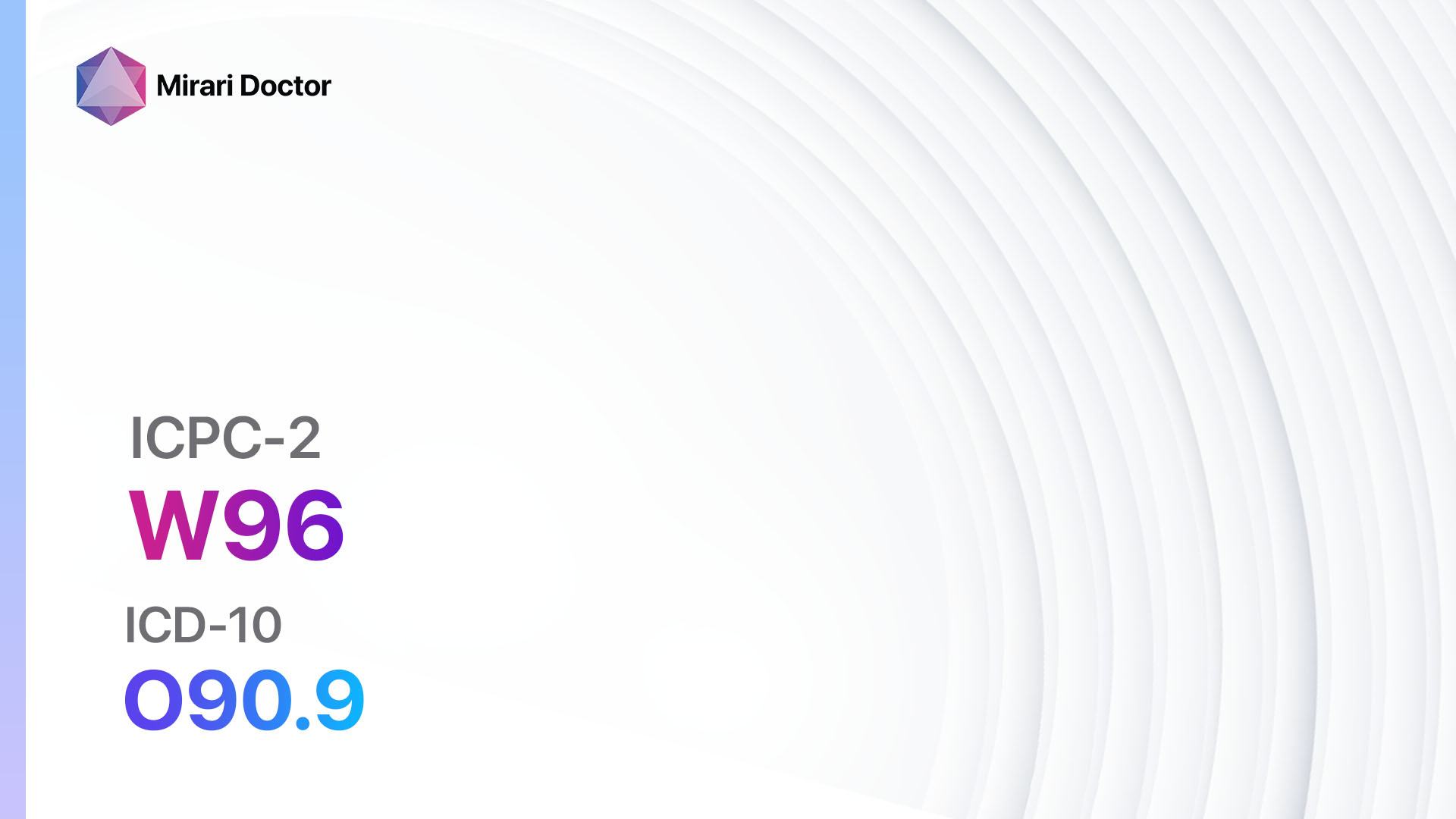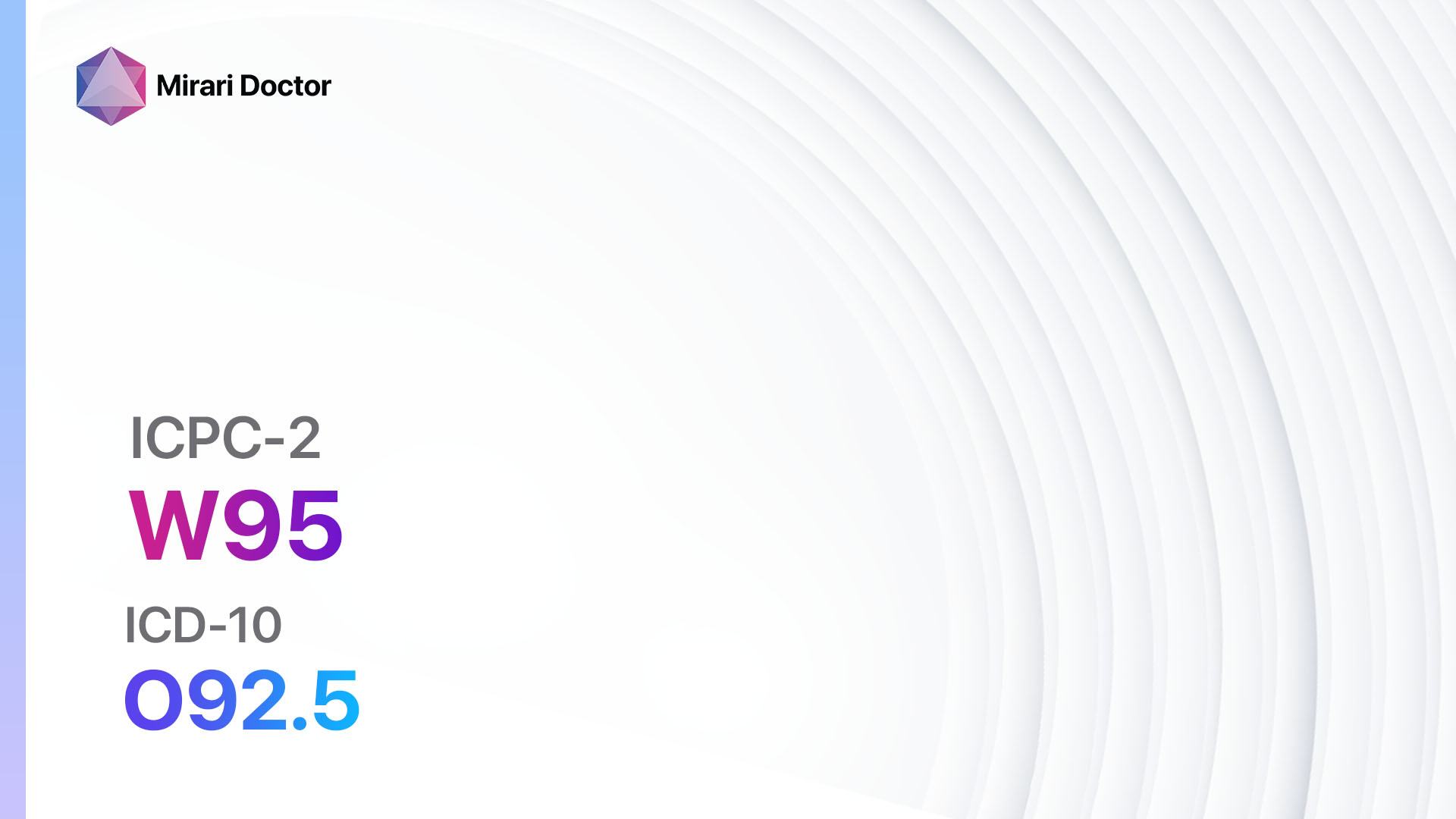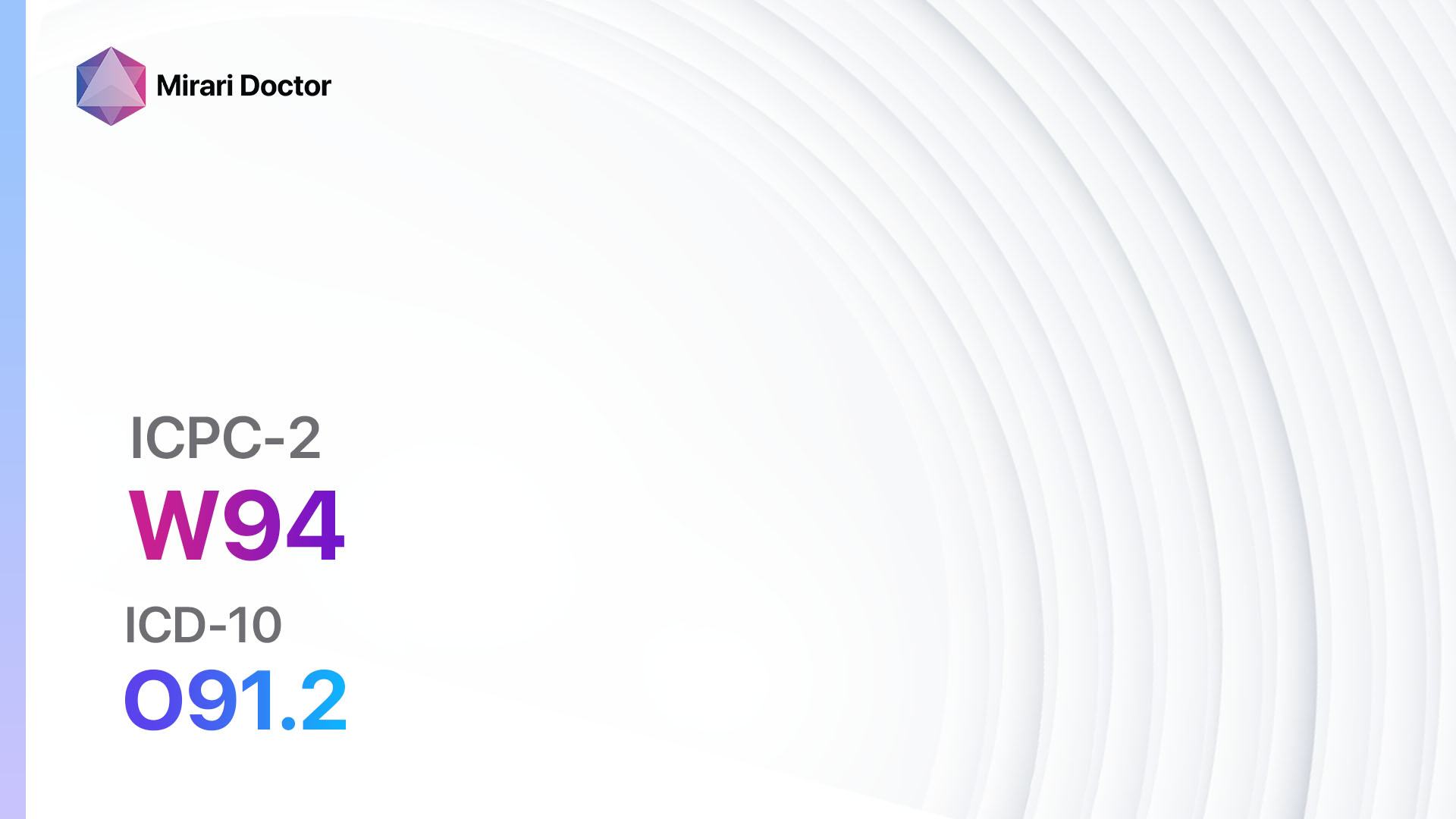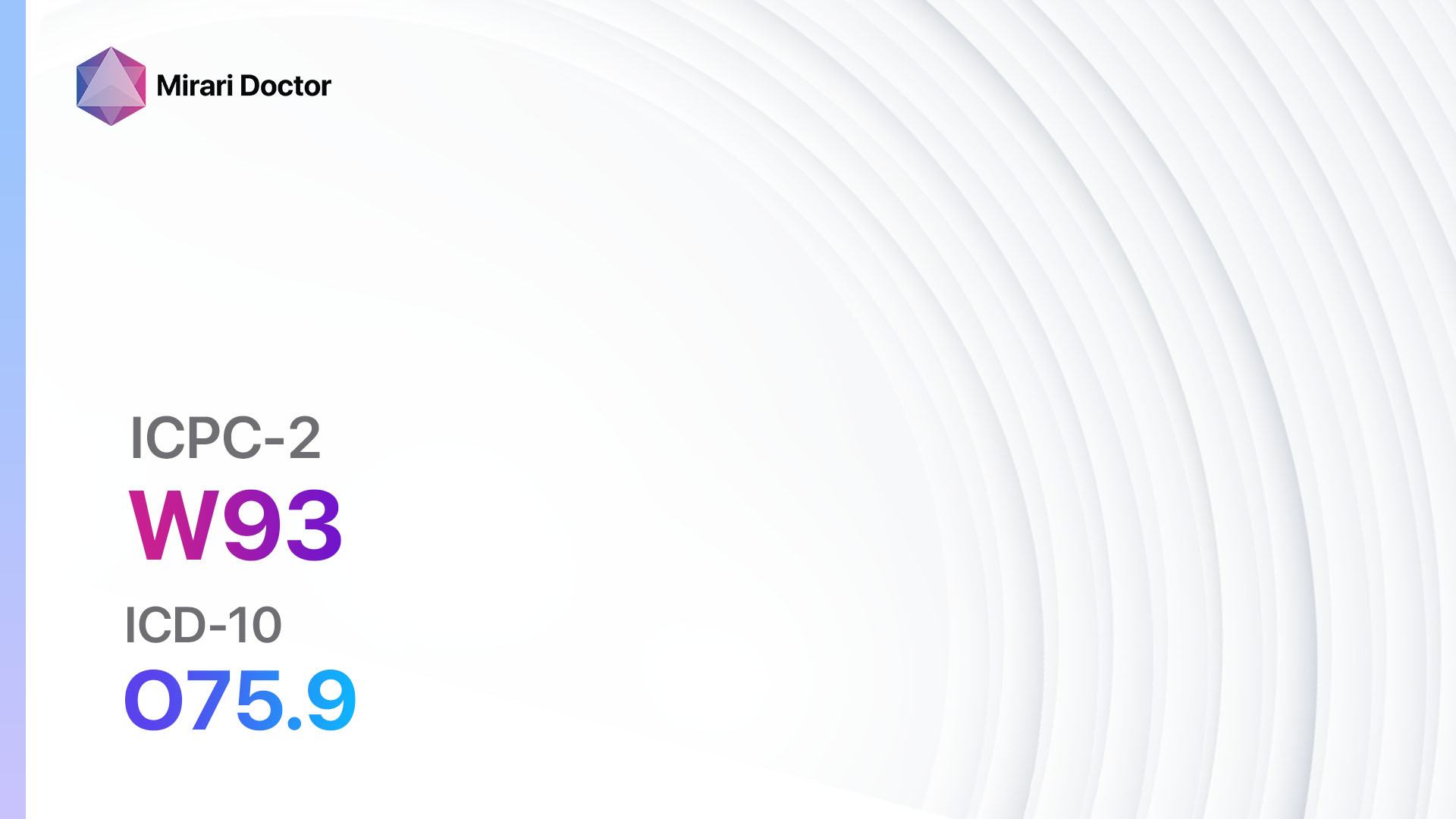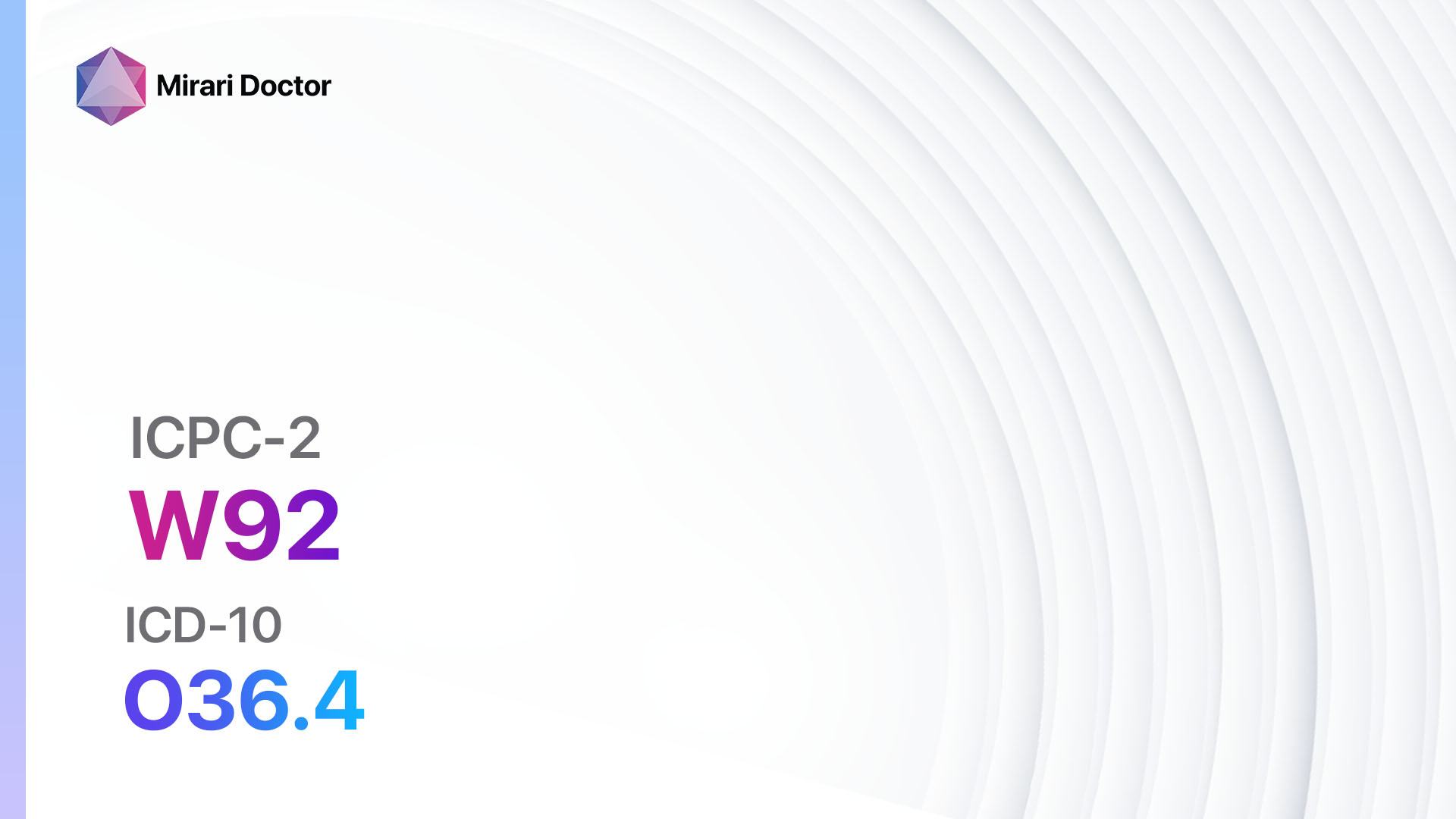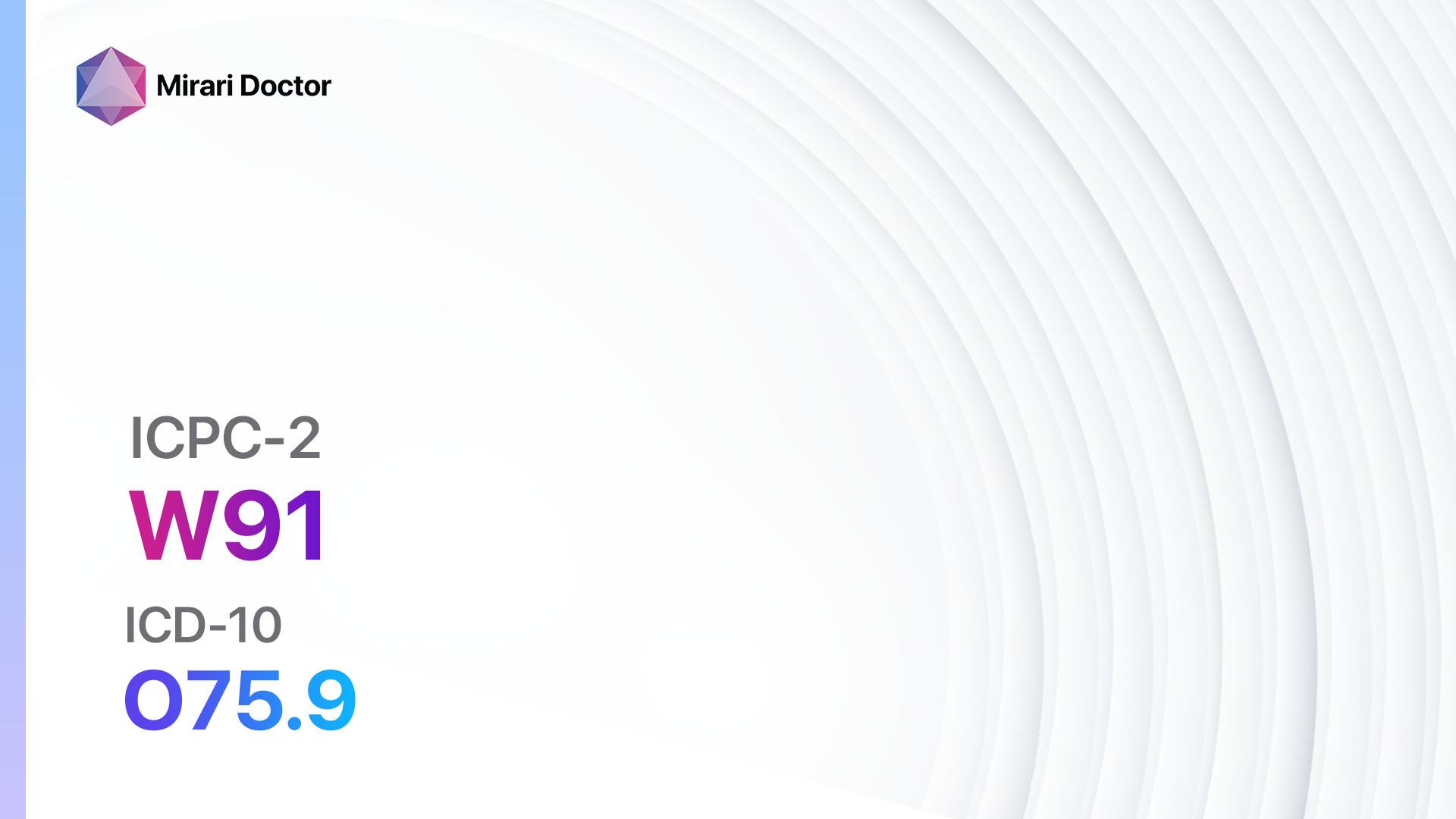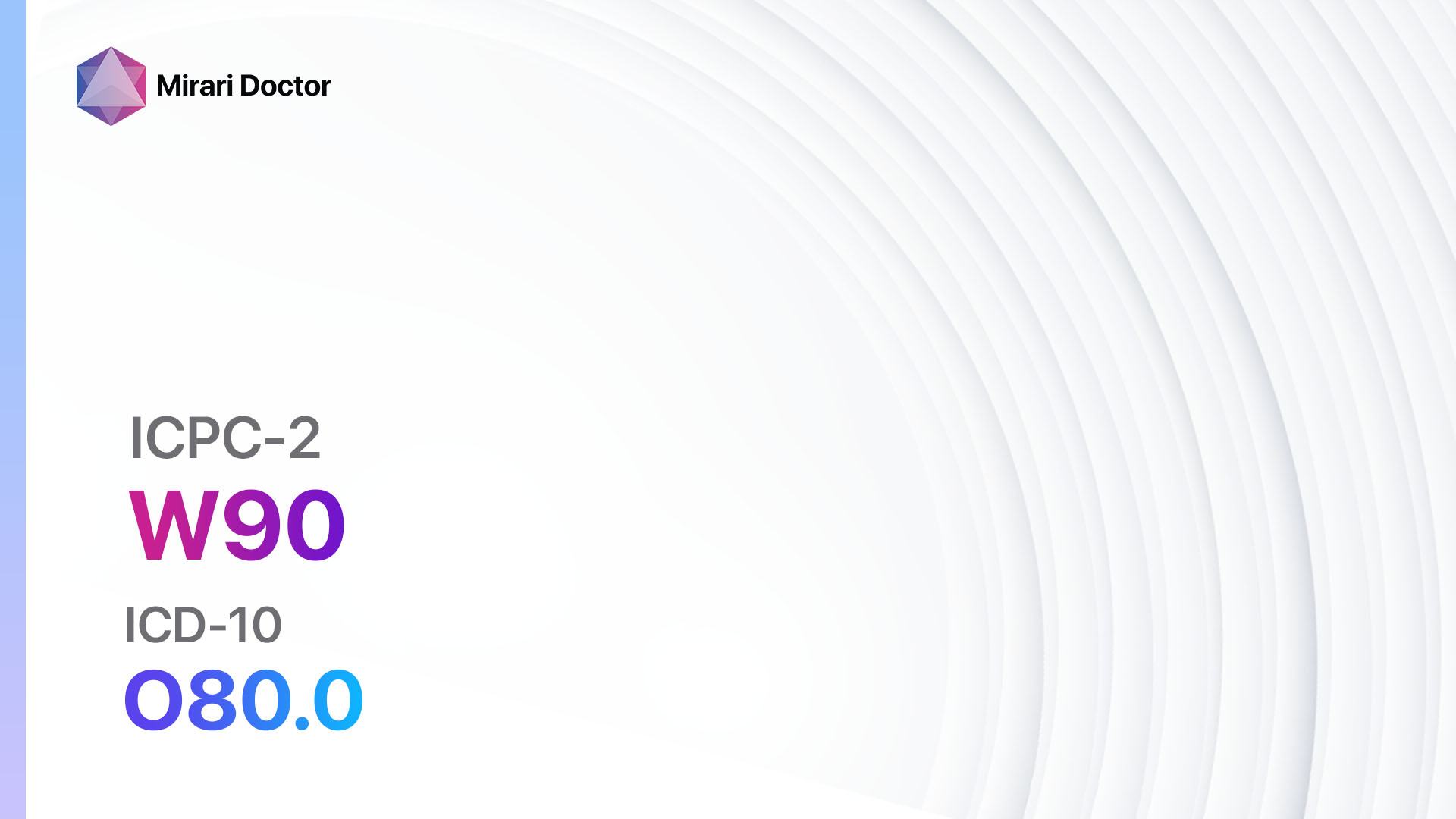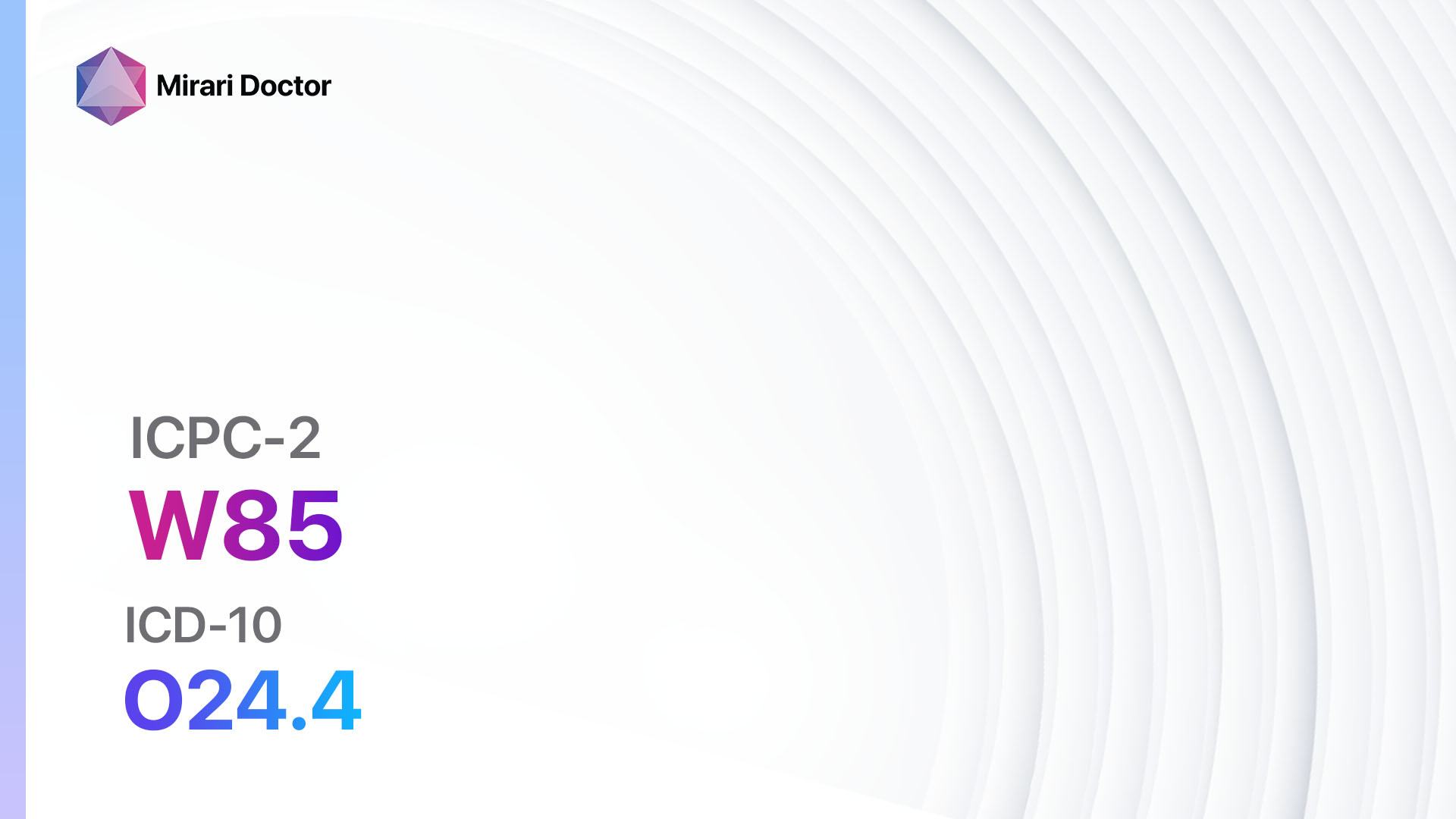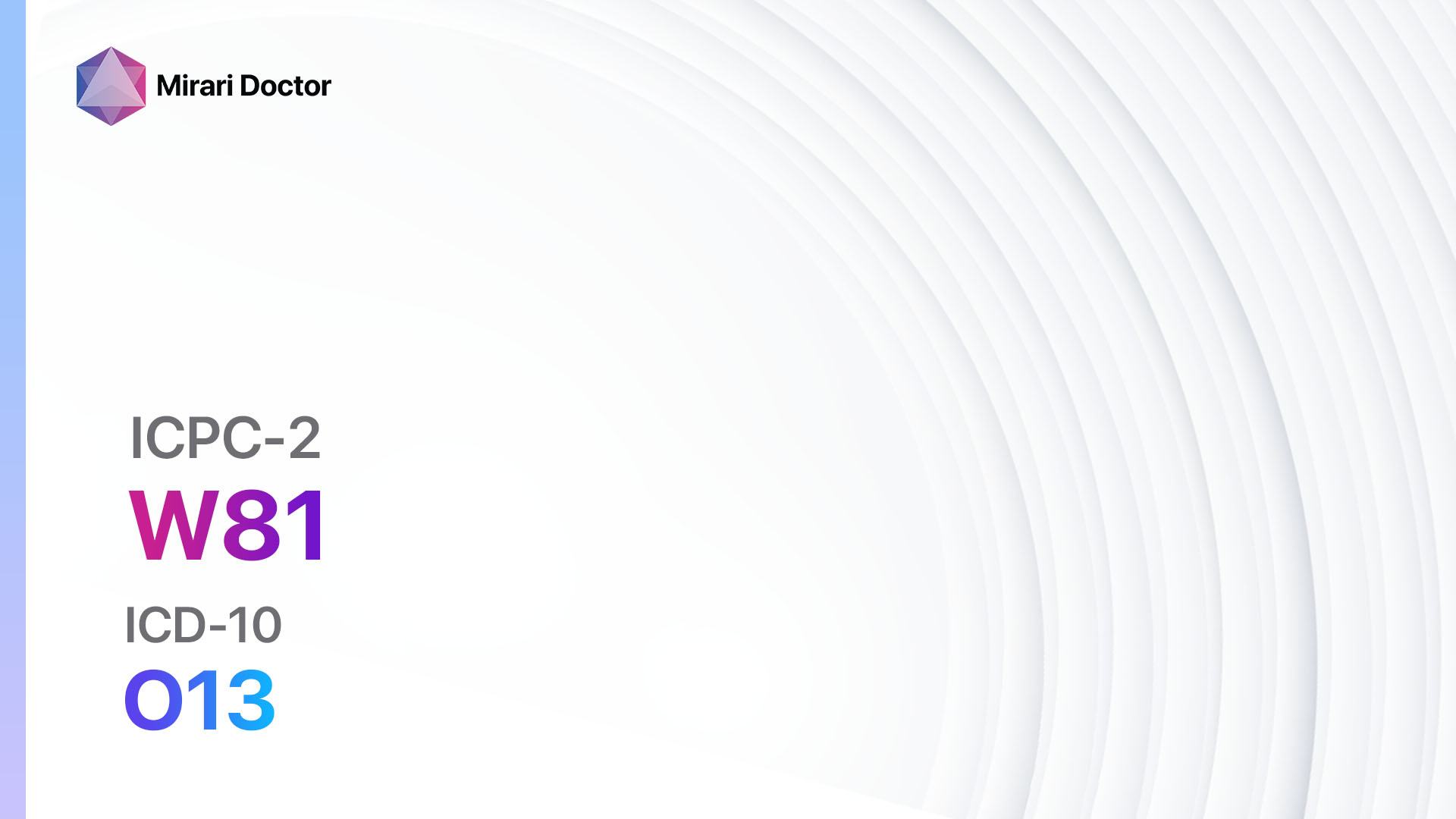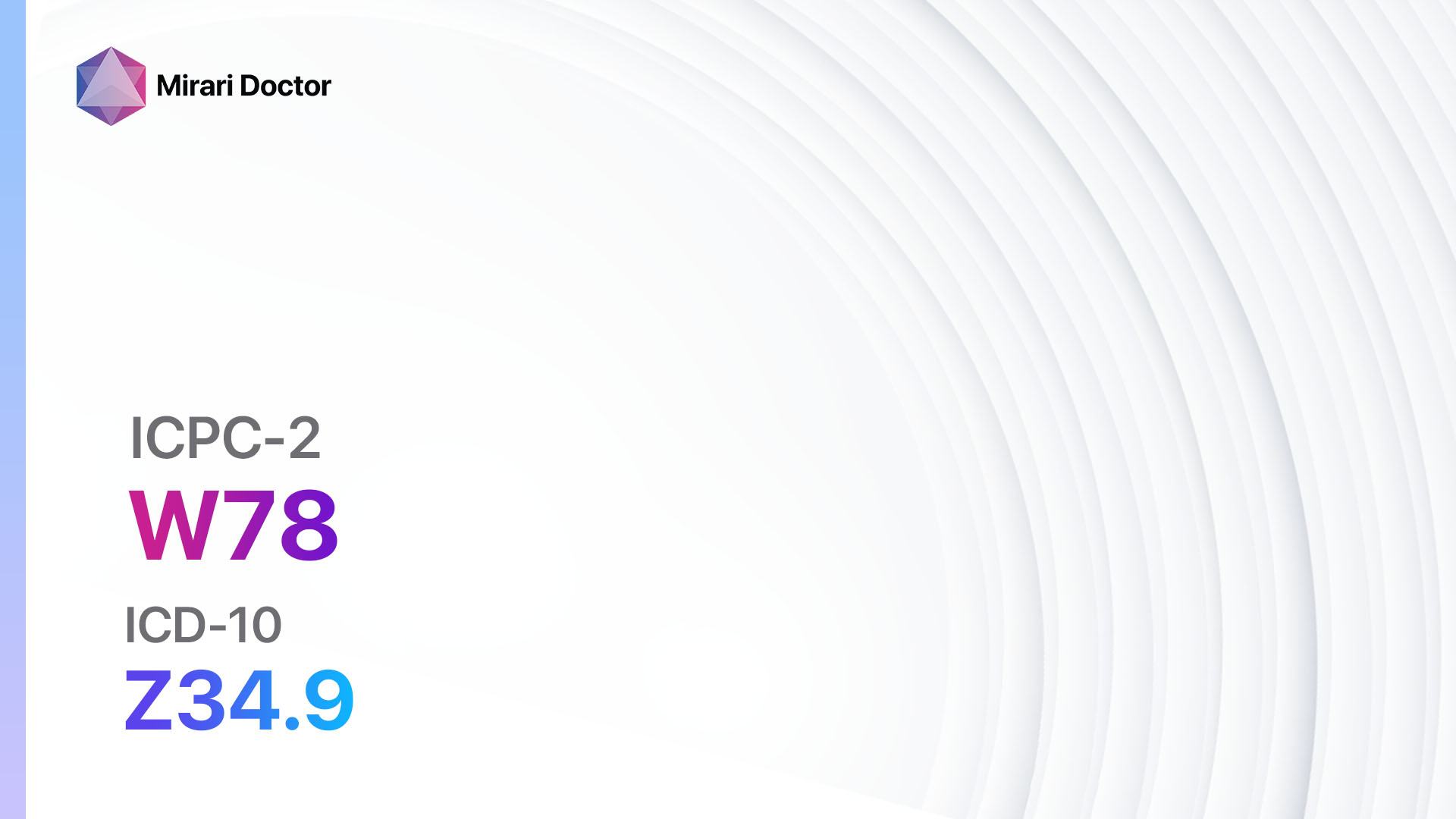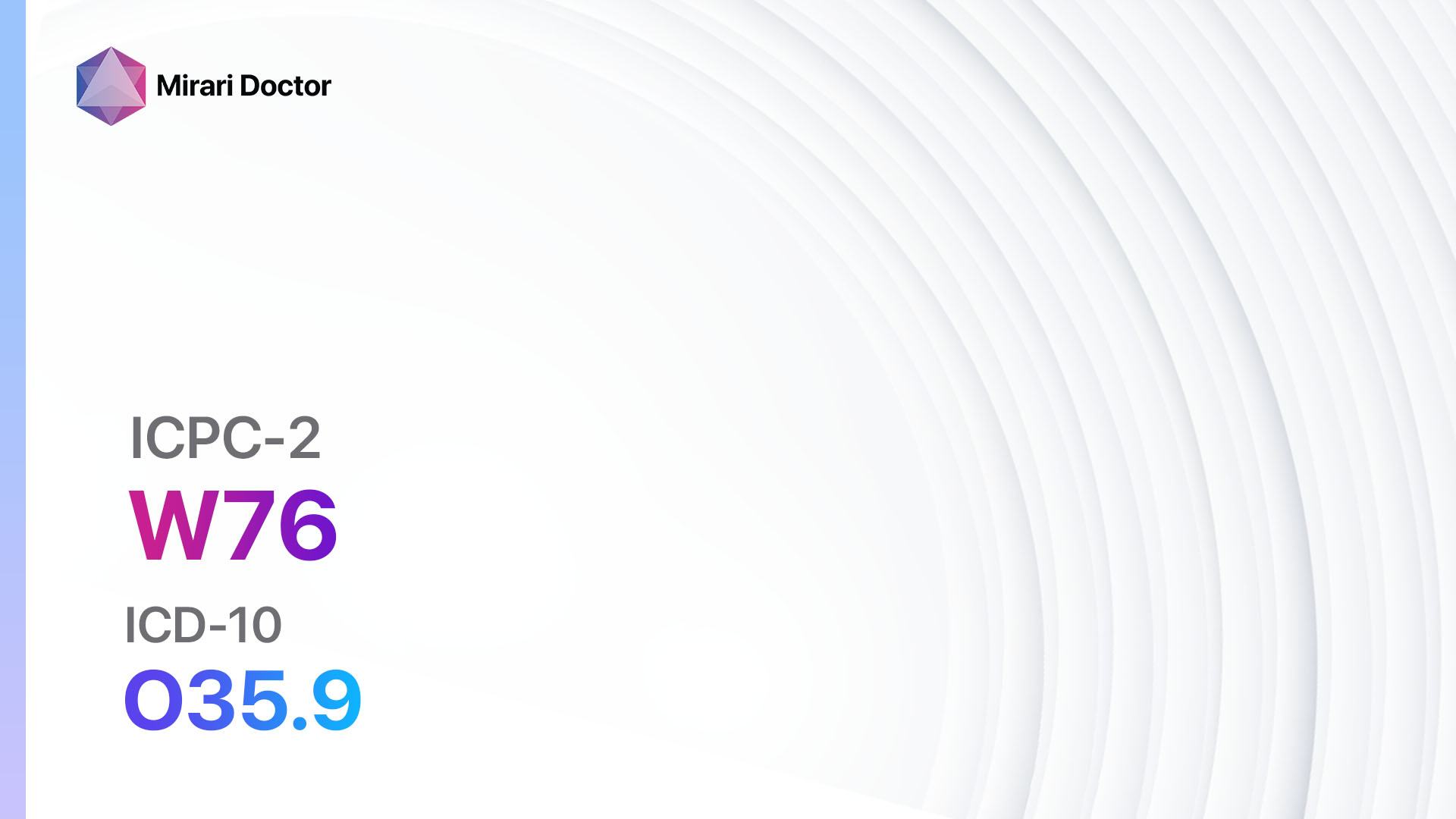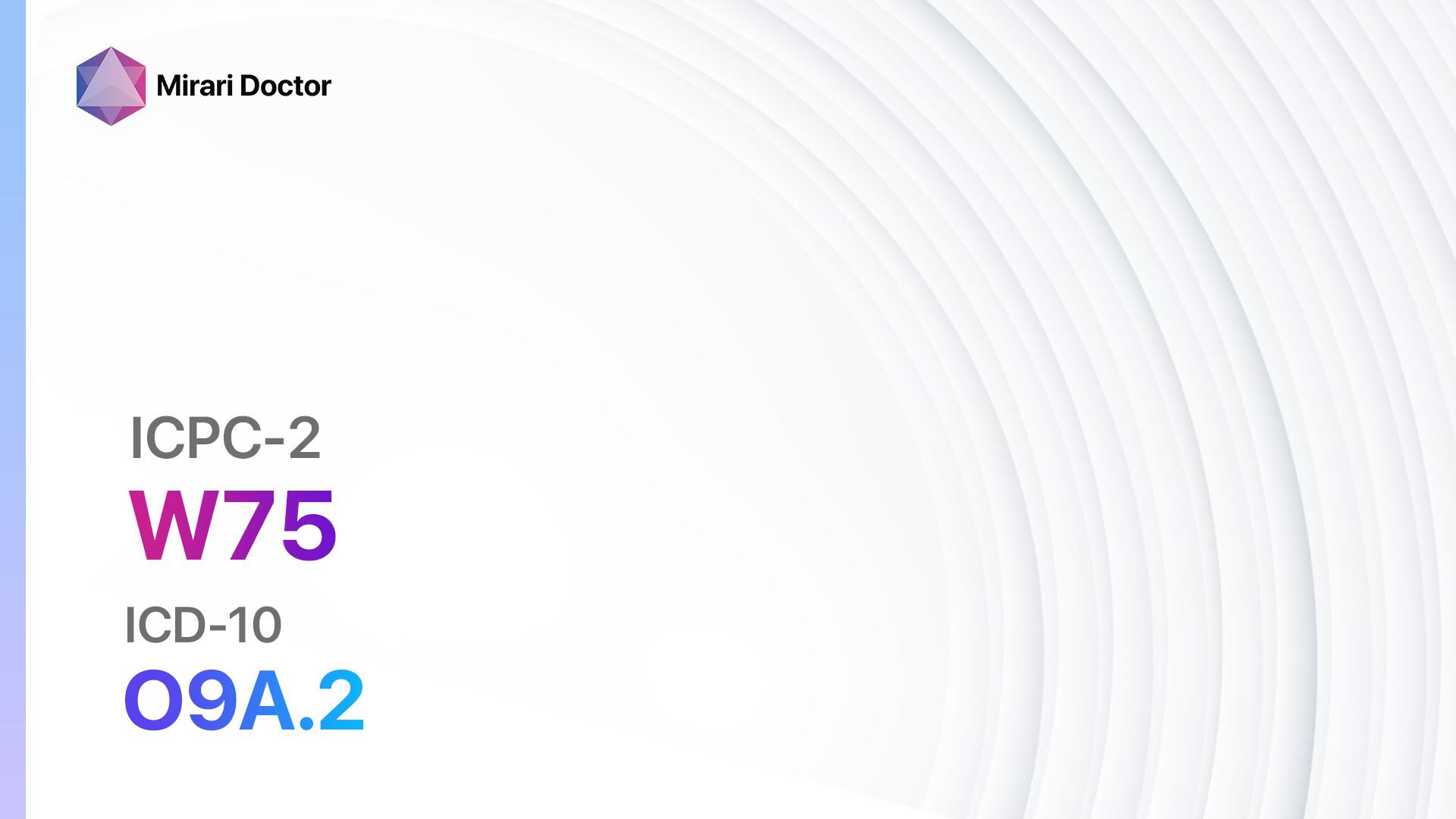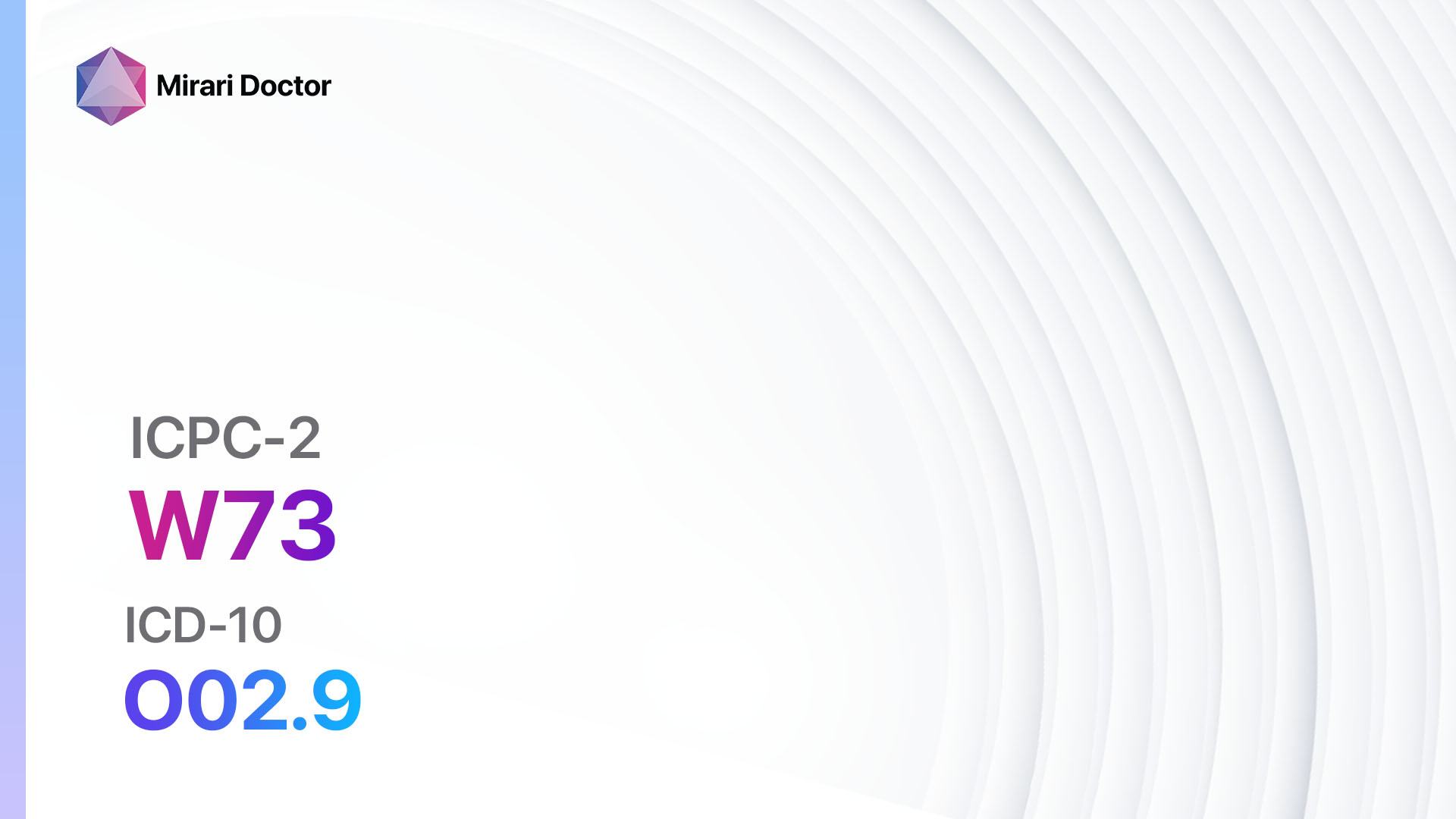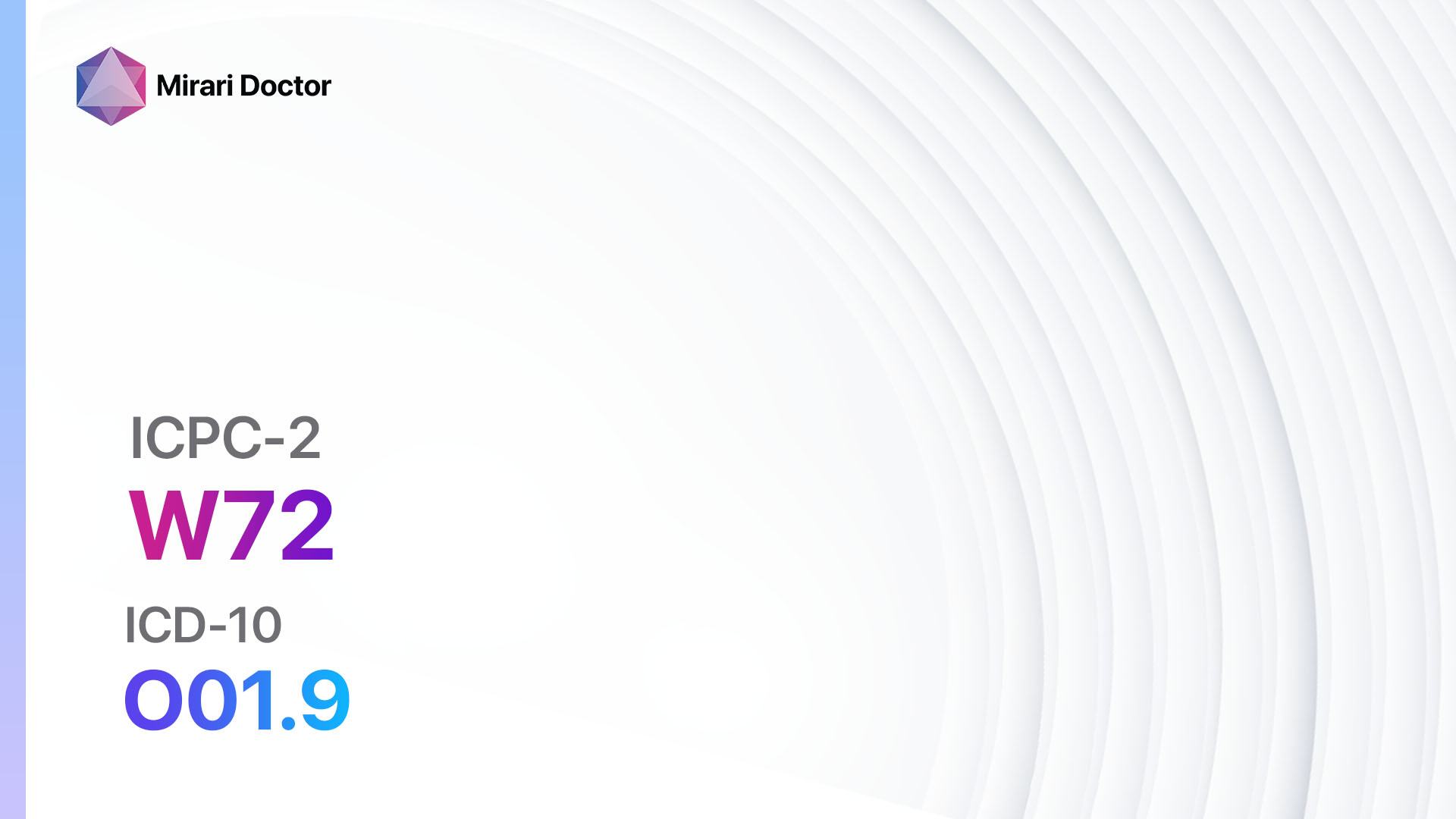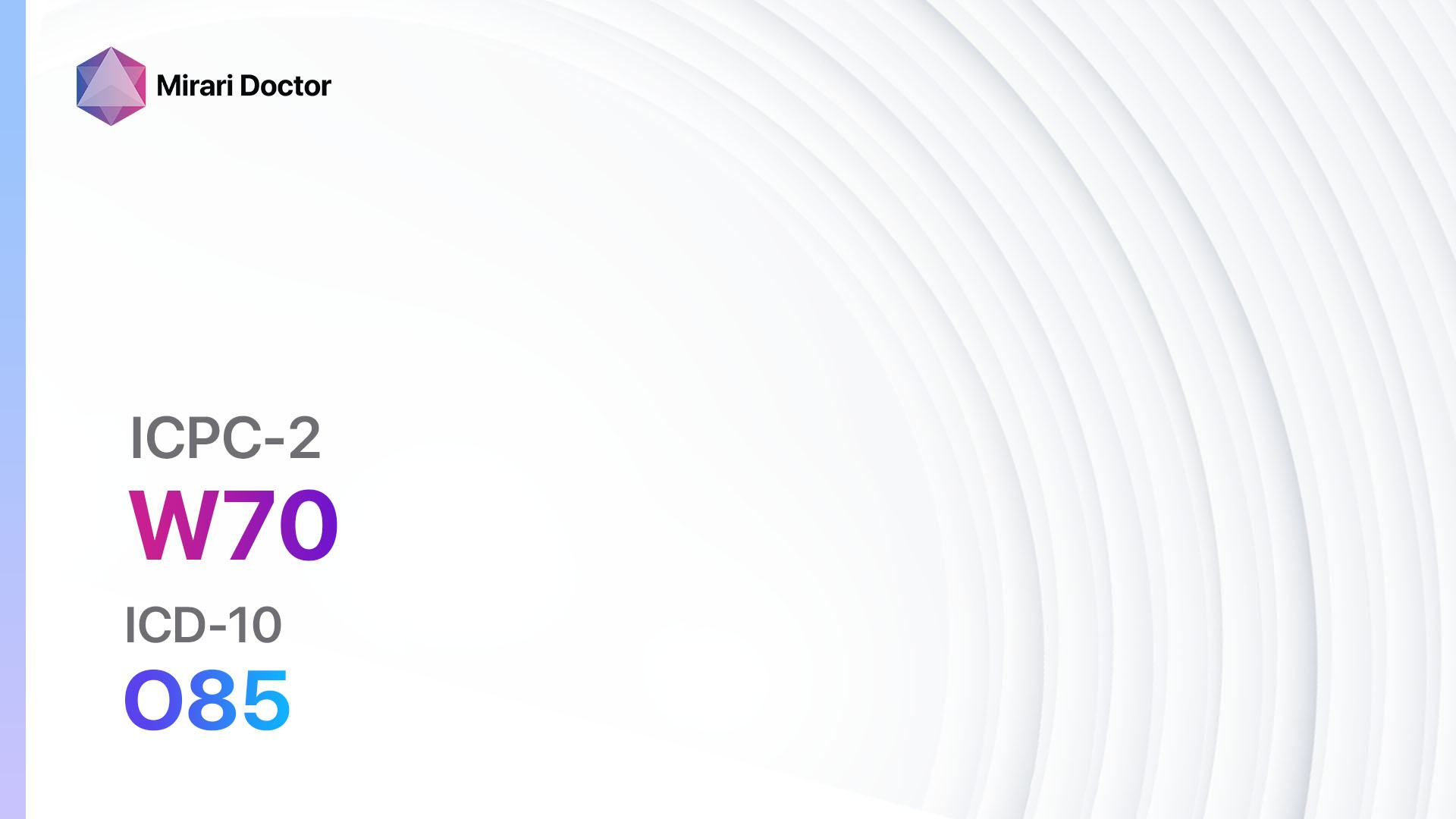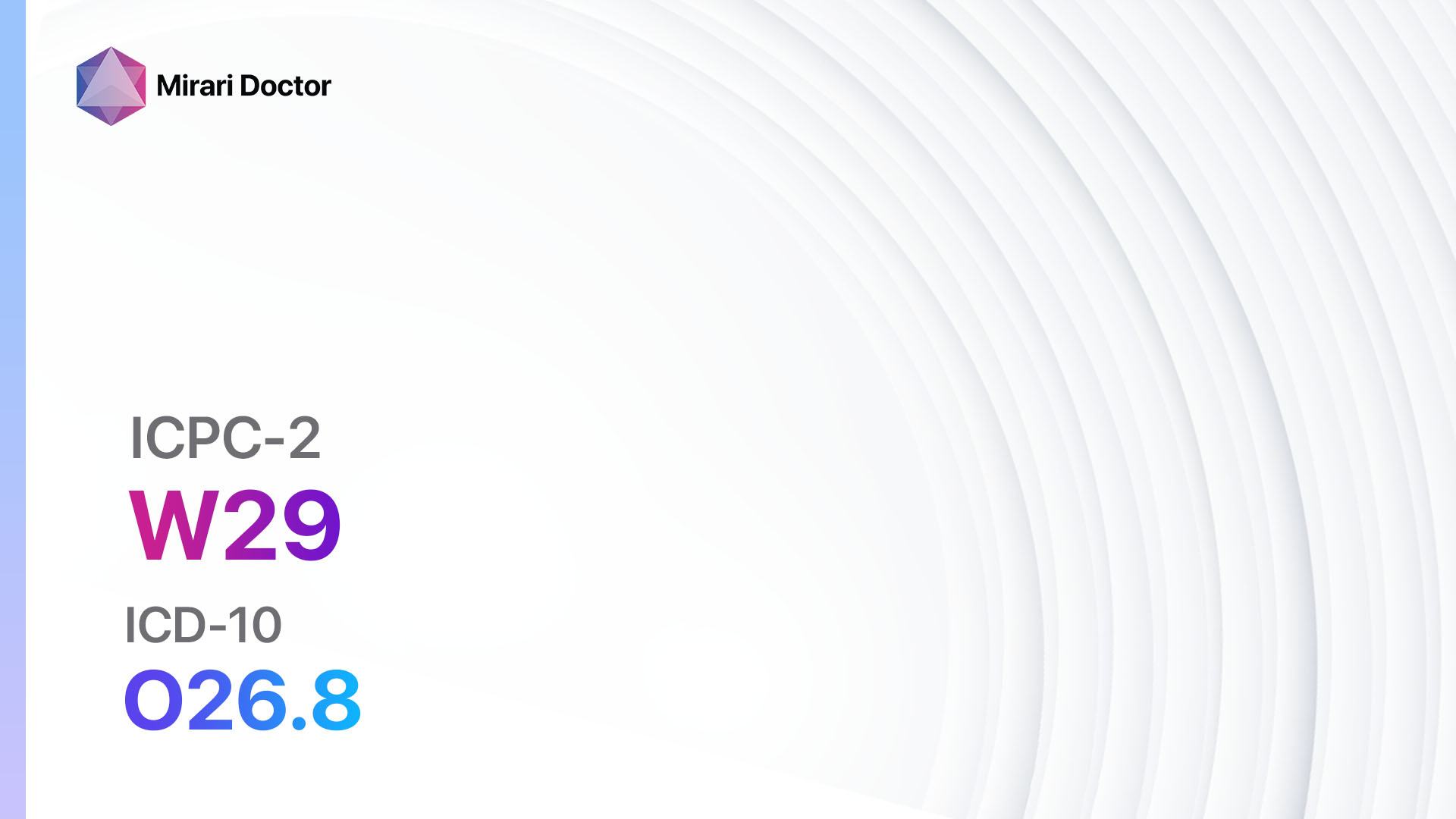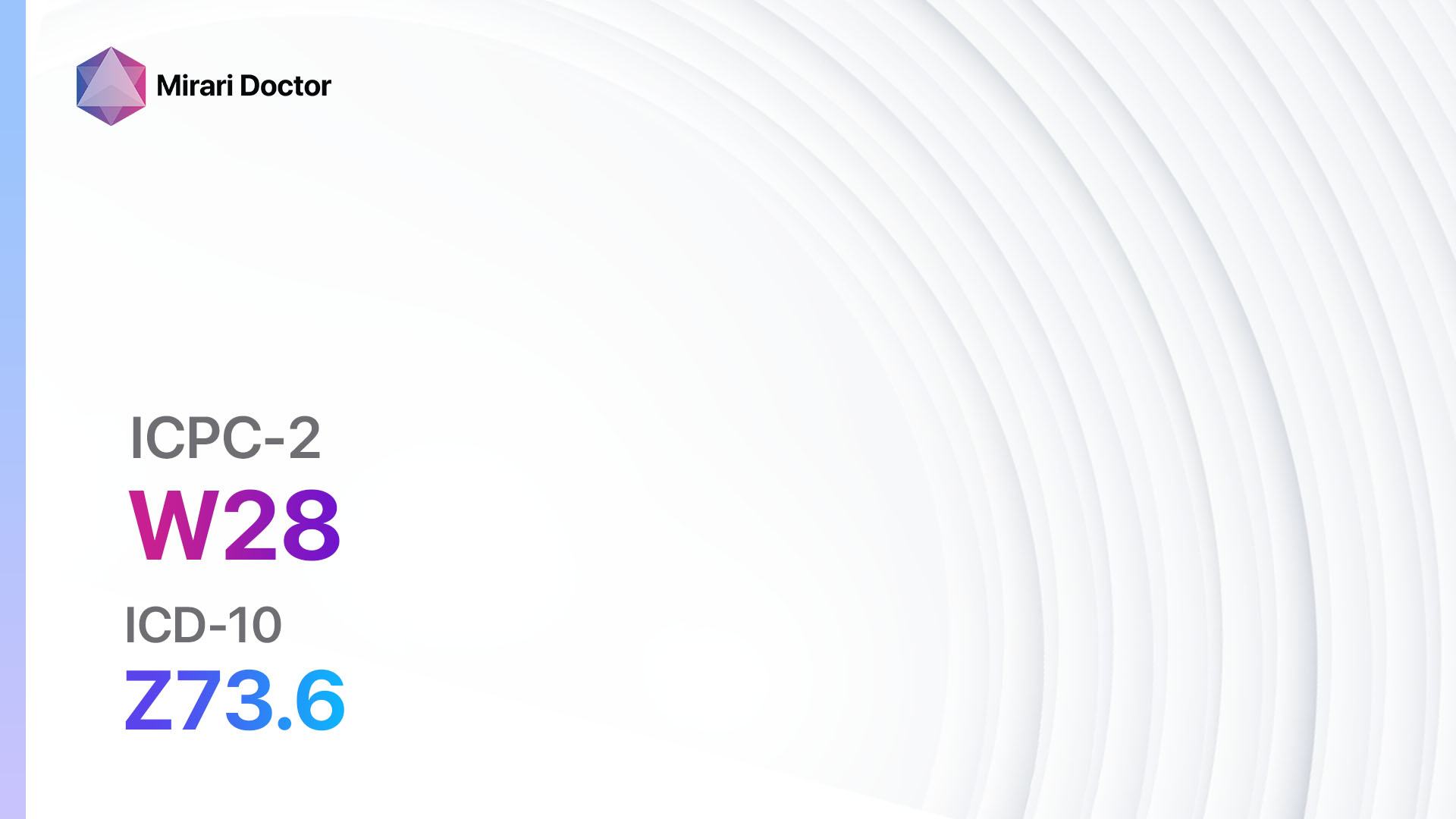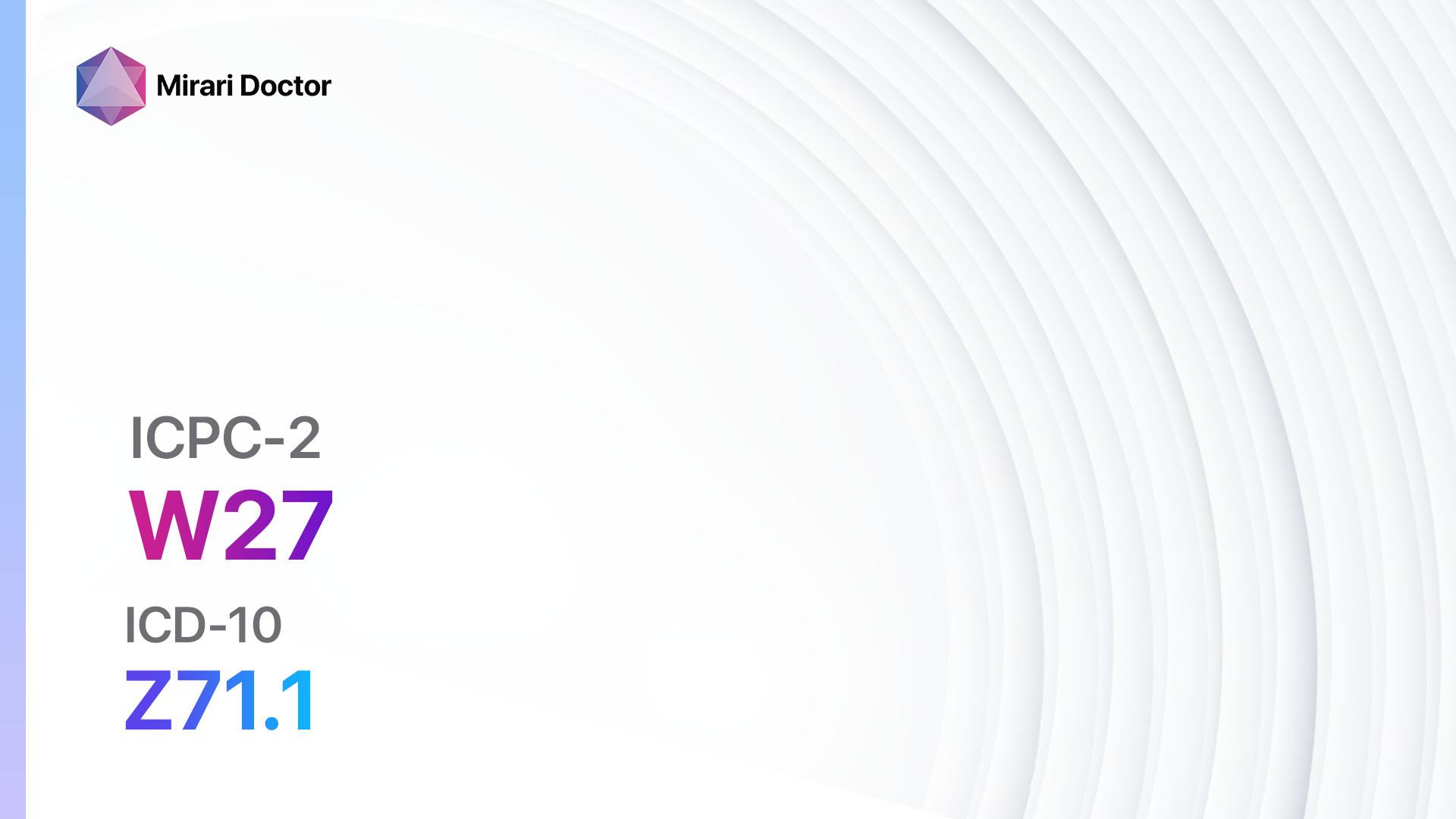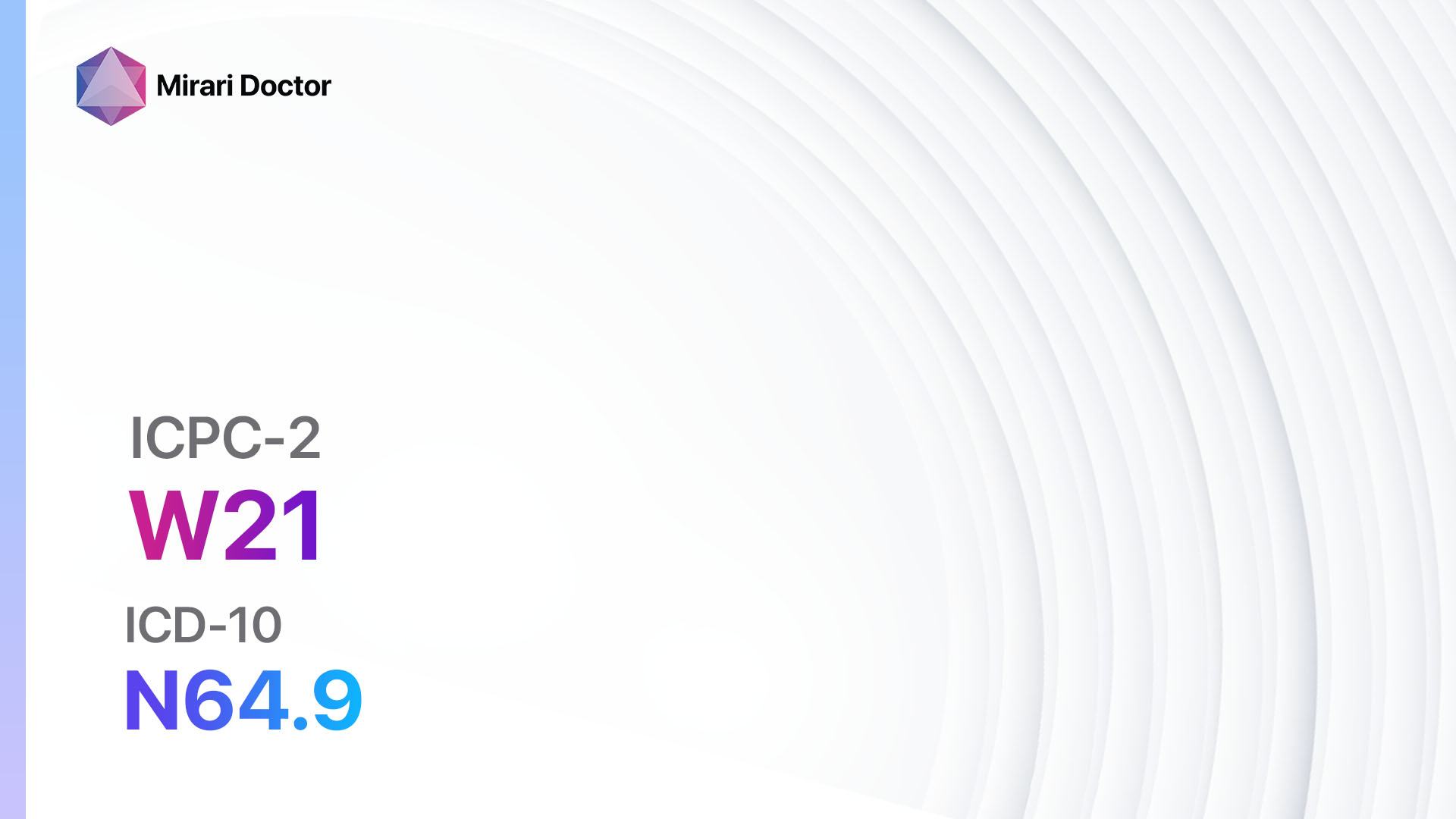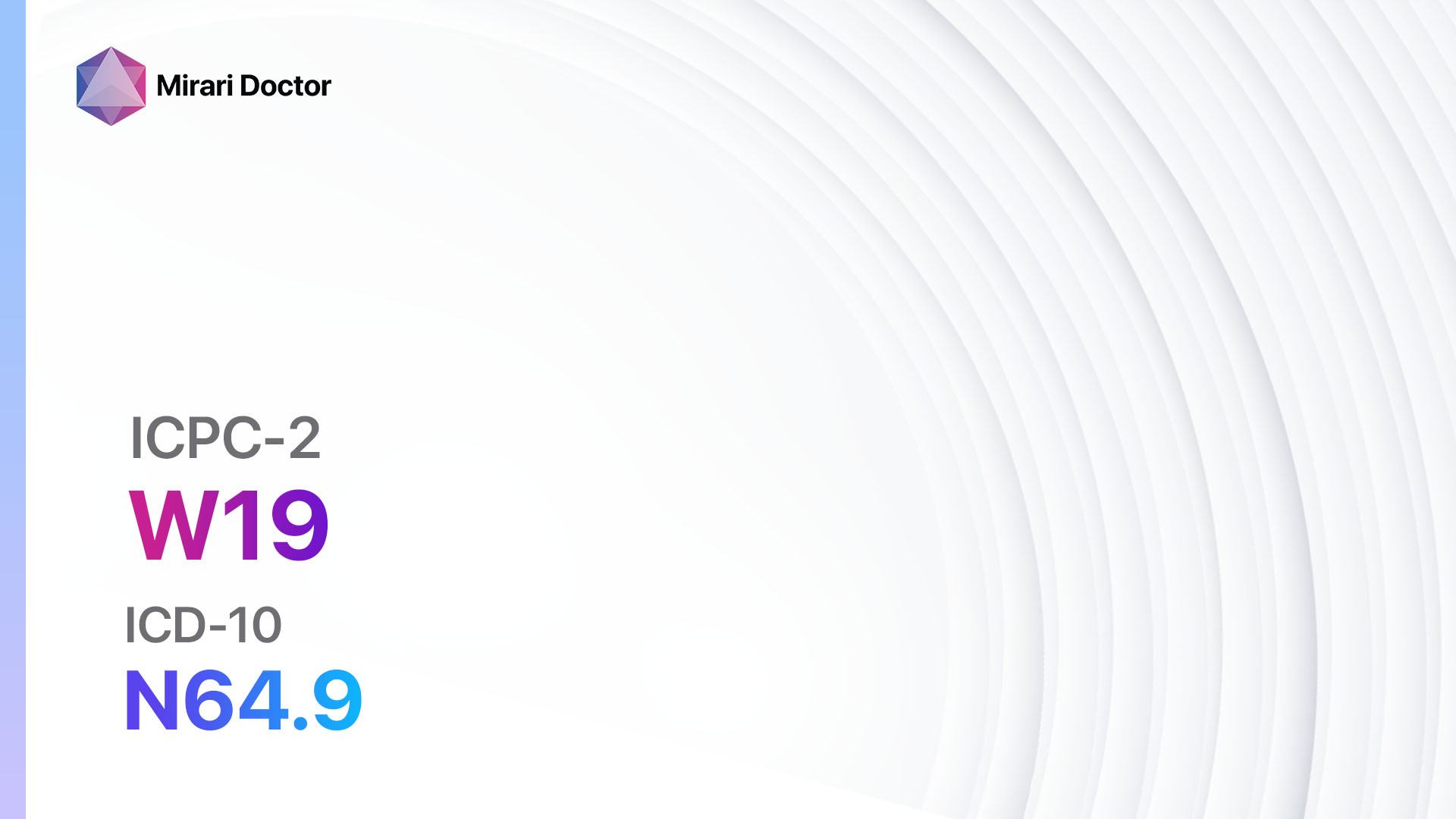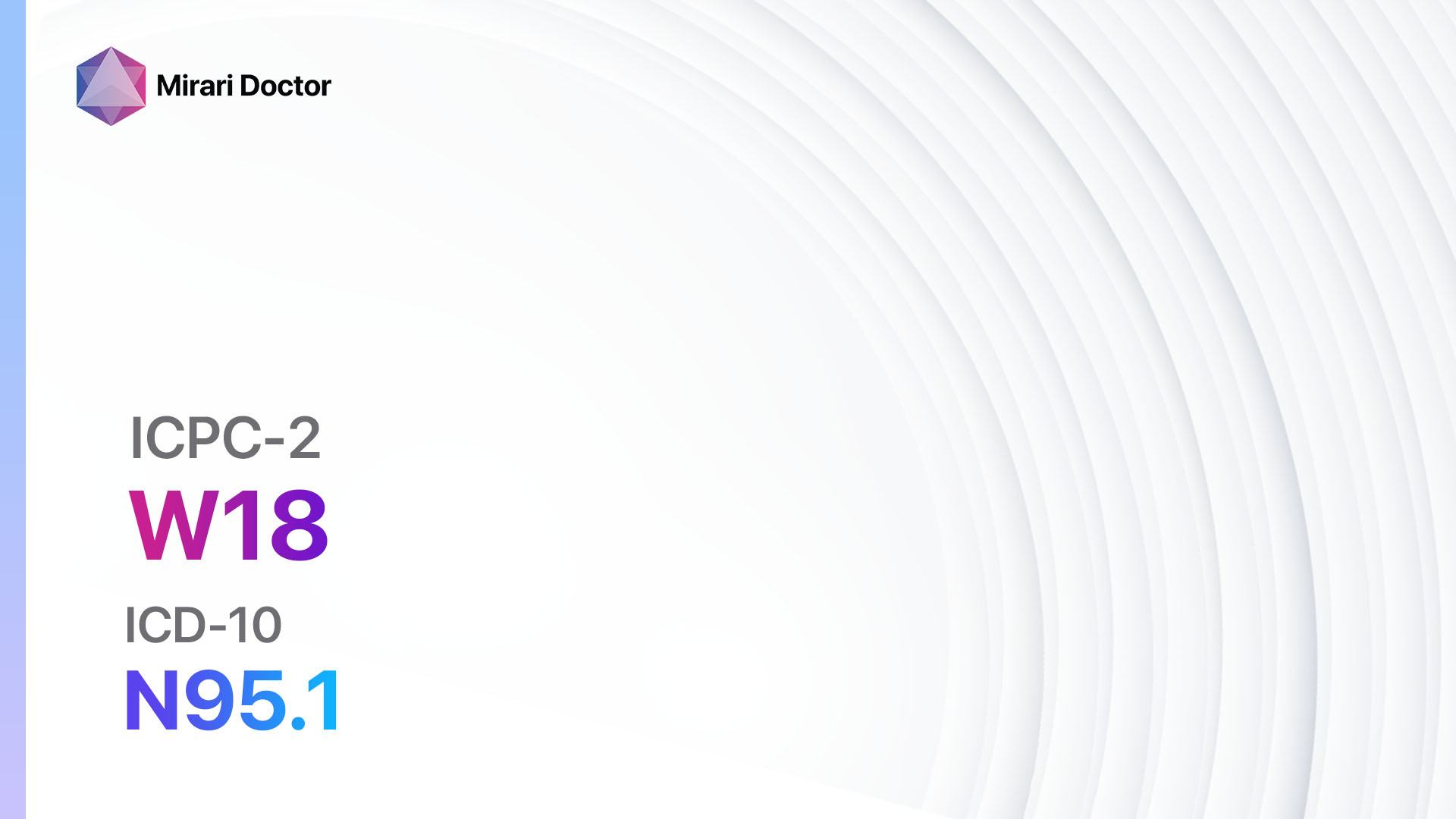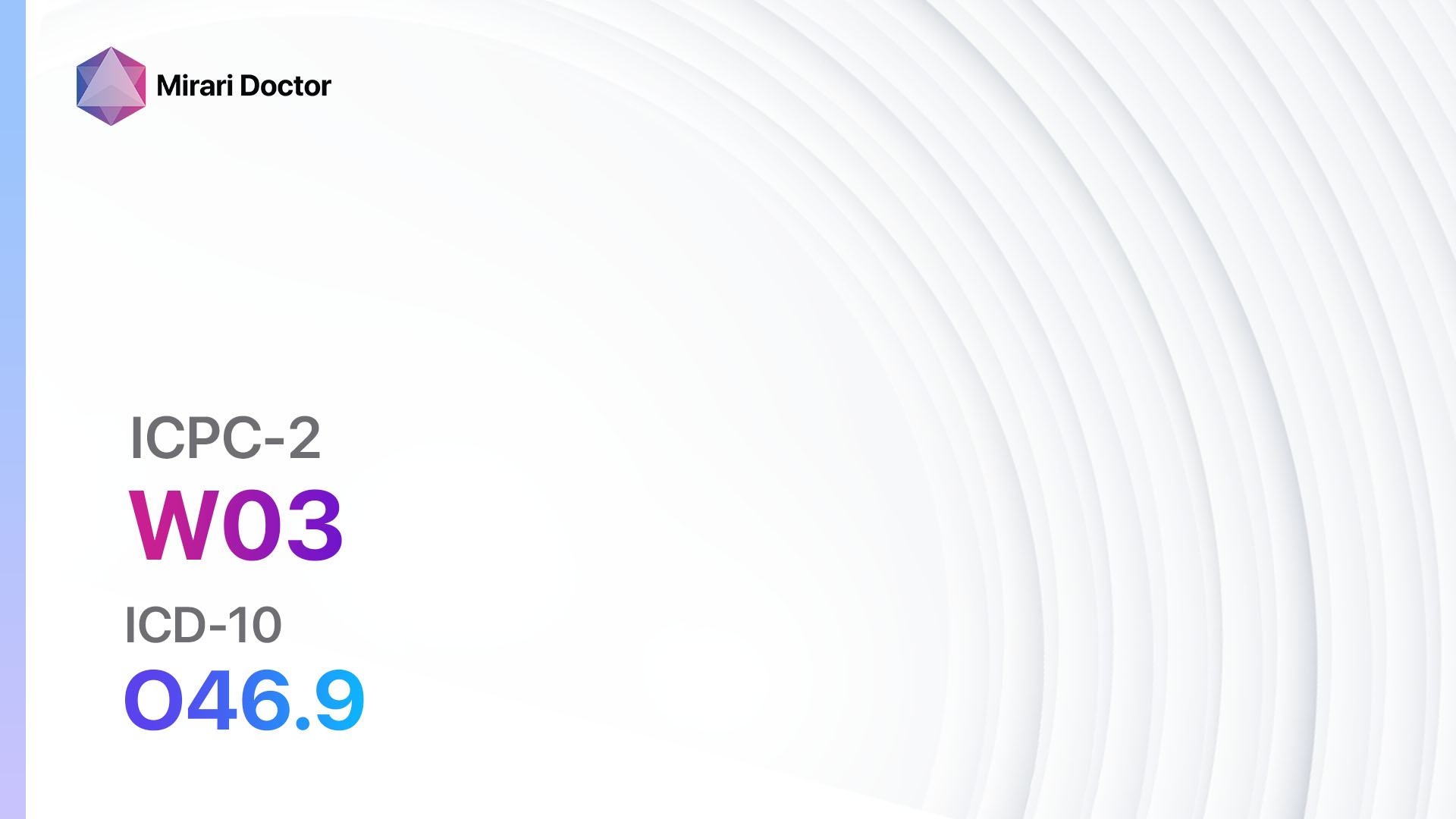
Introduction
Antepartum bleeding, also known as vaginal bleeding during pregnancy, is a common condition that can occur at any stage of pregnancy. It is important to promptly diagnose and manage antepartum bleeding to ensure the well-being of both the mother and the baby[1]. This guide aims to provide healthcare professionals with a comprehensive approach to diagnosing and managing antepartum bleeding.
Codes
Symptoms
- Vaginal bleeding: Any amount of bleeding from the vagina during pregnancy.
- Abdominal pain: Cramping or sharp pain in the lower abdomen.
- Back pain: Dull or throbbing pain in the lower back.
- Uterine contractions: Regular or irregular contractions of the uterus.
- Passage of tissue or clots: Expulsion of blood clots or tissue from the vagina[3].
Causes
- Placenta previa: The placenta partially or completely covers the cervix.
- Placental abruption: The placenta separates from the uterine wall before delivery.
- Uterine rupture: A tear in the wall of the uterus.
- Cervical changes: Changes in the cervix, such as cervical incompetence or cervical polyps.
- Vaginal or cervical infections: Infections in the vagina or cervix, such as bacterial vaginosis or sexually transmitted infections.
- Trauma: Injury to the abdomen or pelvis.
- Ectopic pregnancy: The fertilized egg implants outside the uterus, usually in the fallopian tube.
- Miscarriage: Loss of pregnancy before 20 weeks.
- Other causes: Uterine fibroids, cervical or vaginal cancer, blood clotting disorders, or unknown causes[4].
Diagnostic Steps
Medical History
- Gather information about the patient’s age, gestational age, and previous pregnancies.
- Ask about the onset, duration, and severity of vaginal bleeding.
- Inquire about associated symptoms, such as abdominal pain, back pain, or contractions.
- Assess the patient’s medical history, including any previous episodes of antepartum bleeding, previous miscarriages, or risk factors for placenta previa or placental abruption.
- Determine the patient’s obstetric history, including the number of previous pregnancies, deliveries, and cesarean sections[5].
Physical Examination
- Perform a general physical examination to assess the patient’s overall health.
- Conduct a pelvic examination to evaluate the cervix, uterus, and vagina.
- Assess the consistency and position of the cervix.
- Palpate the uterus to check for tenderness, contractions, or abnormal masses.
- Inspect the vagina for signs of trauma, infection, or cervical changes[6].
Laboratory Tests
- Complete blood count (CBC): Assess for anemia or signs of infection.
- Blood type and Rh factor: Determine the patient’s blood type and Rh factor.
- Coagulation profile: Evaluate the patient’s blood clotting ability.
- Urinalysis: Screen for urinary tract infections or kidney problems.
- Quantitative beta-hCG: Measure the level of human chorionic gonadotropin (hCG) to confirm pregnancy and assess its viability.
- Kleihauer-Betke test: Determine the presence of fetal red blood cells in maternal circulation, which may indicate placental abruption[7].
Diagnostic Imaging
- Ultrasound: Visualize the uterus, placenta, and fetus to assess for placenta previa, placental abruption, or other abnormalities.
- Doppler ultrasound: Assess blood flow in the uterine arteries to determine the risk of placental abruption.
- Magnetic resonance imaging (MRI): Provide detailed images of the pelvis and abdomen if ultrasound findings are inconclusive or further evaluation is needed[8].
Other Tests
- Non-stress test: Monitor the baby’s heart rate and movements to assess fetal well-being.
- Biophysical profile: Combine ultrasound and non-stress test to evaluate fetal well-being.
- Fetal fibronectin test: Assess the risk of preterm birth by measuring the presence of fetal fibronectin in vaginal secretions.
- Genetic testing: Offer genetic testing if there is a history of recurrent miscarriages or suspected genetic abnormalities[9].
Follow-up and Patient Education
- Schedule regular follow-up appointments to monitor the patient’s condition and assess fetal well-being.
- Educate the patient about the signs and symptoms of antepartum bleeding and when to seek immediate medical attention.
- Discuss the importance of bed rest, avoiding sexual intercourse, and refraining from strenuous activities.
- Provide emotional support and counseling to address any concerns or anxieties the patient may have[10].
Possible Interventions
Traditional Interventions
Medications:
Top 5 drugs for Antepartum bleeding:
- Rho(D) immune globulin:
- Cost: $50-$200 per dose.
- Contraindications: None.
- Side effects: Local injection site reactions.
- Severe side effects: Rare but possible allergic reactions.
- Drug interactions: None.
- Warning: Administer within 72 hours of potential fetal-maternal hemorrhage.
- Tocolytic agents (e.g., Nifedipine, Indomethacin):
- Cost: $10-$50 per month.
- Contraindications: Maternal hemodynamic instability, severe preeclampsia, fetal distress.
- Side effects: Headache, dizziness, nausea.
- Severe side effects: Pulmonary edema, fetal compromise.
- Drug interactions: Beta-blockers, magnesium sulfate.
- Warning: Monitor maternal blood pressure and fetal well-being.
- Corticosteroids (e.g., Betamethasone, Dexamethasone):
- Cost: $10-$50 per dose.
- Contraindications: Maternal infection, uncontrolled diabetes.
- Side effects: Increased blood sugar, fluid retention.
- Severe side effects: None with short-term use.
- Drug interactions: None.
- Warning: Administer to enhance fetal lung maturity in cases of preterm labor.
- Antibiotics (e.g., Ampicillin, Erythromycin):
- Cost: $10-$50 per course.
- Contraindications: Allergy to antibiotics.
- Side effects: Nausea, diarrhea.
- Severe side effects: Rare but possible allergic reactions.
- Drug interactions: None.
- Warning: Administer in cases of suspected or confirmed infection.
- Iron supplementation:
- Cost: $5-$20 per month.
- Contraindications: Hemochromatosis, iron overload.
- Side effects: Constipation, dark stools.
- Severe side effects: None.
- Drug interactions: Antacids, tetracycline antibiotics.
- Warning: Monitor hemoglobin levels and adjust dosage accordingly.
Alternative Drugs:
- Tranexamic acid: Used to control excessive bleeding.
- Misoprostol: Induces uterine contractions to expel retained products of conception.
- Methylergonovine: Stimulates uterine contractions to control bleeding.
- Oxytocin: Administered to induce or augment labor and control bleeding.
- Prostaglandin analogs: Used to ripen the cervix and induce labor.
Surgical Procedures:
- Cesarean section: Performed if the mother or baby’s life is at risk or if vaginal delivery is not possible.
- Cost: $15,000 to $50,000.
- Dilation and curettage (D&C): Performed to remove retained products of conception.
- Cost: $5,000 to $15,000.
Alternative Interventions
- Acupuncture: May help reduce pain and promote relaxation.
- Cost: $60-$120 per session.
- Chiropractic care: May help alleviate musculoskeletal pain and discomfort.
- Cost: $50-$150 per session.
- Herbal remedies: Some herbs, such as shepherd’s purse or yarrow, may help control bleeding.
- Cost: Varies depending on the specific herb.
- Homeopathy: Individualized remedies may be prescribed to address specific symptoms.
- Cost: $50-$100 per consultation.
- Mind-body techniques: Relaxation techniques, meditation, or yoga may help reduce stress and promote well-being.
- Cost: Varies depending on the specific practice.
Lifestyle Interventions
- Bed rest: Restricting physical activity and spending more time in bed may help reduce bleeding.
- Cost: None.
- Pelvic rest: Avoiding sexual intercourse and using tampons may help prevent further bleeding.
- Cost: None.
- Stress reduction: Engaging in activities that promote relaxation and stress reduction, such as mindfulness or therapy, may help improve outcomes.
- Cost: Varies depending on the specific practice.
- Healthy diet: Consuming a balanced diet rich in nutrients may support overall health and well-being.
- Cost: Varies depending on food choices.
- Avoiding smoking and alcohol: Eliminating or reducing exposure to harmful substances may improve outcomes.
- Cost: None.
It is important to note that the cost ranges provided are approximate and may vary depending on the location and availability of the interventions.
Mirari Cold Plasma Alternative Intervention
Understanding Mirari Cold Plasma
- Safe and Non-Invasive Treatment: Mirari Cold Plasma is a safe and non-invasive treatment option for various skin conditions. It does not require incisions, minimizing the risk of scarring, bleeding, or tissue damage.
- Efficient Extraction of Foreign Bodies: Mirari Cold Plasma facilitates the removal of foreign bodies from the skin by degrading and dissociating organic matter, allowing easier access and extraction.
- Pain Reduction and Comfort: Mirari Cold Plasma has a local analgesic effect, providing pain relief during the treatment, making it more comfortable for the patient.
- Reduced Risk of Infection: Mirari Cold Plasma has antimicrobial properties, effectively killing bacteria and reducing the risk of infection.
- Accelerated Healing and Minimal Scarring: Mirari Cold Plasma stimulates wound healing and tissue regeneration, reducing healing time and minimizing the formation of scars.
Mirari Cold Plasma Prescription
Video instructions for using Mirari Cold Plasma Device – W03 Antepartum bleeding (ICD-10:O46.9)
| Mild | Moderate | Severe |
| Mode setting: 2 (Wound Healing) Location: 2 (Prostate & Uterus) Morning: 15 minutes, Evening: 15 minutes | Mode setting: 2 (Wound Healing) Location: 2 (Prostate & Uterus) Morning: 30 minutes, Lunch: 30 minutes, Evening: 30 minutes | Mode setting: 2 (Wound Healing) Location: 2 (Prostate & Uterus) Morning: 30 minutes, Lunch: 30 minutes, Evening: 30 minutes |
| Mode setting: 7 (Immunotherapy) Location: 1 (Sacrum) Morning: 15 minutes, Evening: 15 minutes | Mode setting: 7 (Immunotherapy) Location: 1 (Sacrum) Morning: 30 minutes, Lunch: 30 minutes, Evening: 30 minutes | Mode setting: 7 (Immunotherapy) Location: 1 (Sacrum) Morning: 30 minutes, Lunch: 30 minutes, Evening: 30 minutes |
| Modesetting:6 (Liver/Kidney Therapy) Location:3 (Kidney, Liver & Spleen) Morning:15 minutes, Evening:15minutes | Modesetting:6 (Liver/Kidney Therapy) Location:3 (Kidney, Liver & Spleen) Morning:30 minutes, Lunch:30 minutes, Evening:30 minutes | Modesetting:6 (Liver/Kidney Therapy) Location:3 (Kidney, Liver & Spleen) Morning:30 minutes, Lunch:30 minutes, Evening:30 minutes |
| Total Morning:45minutesapprox.$7.50USD, Evening:45minutesapprox.$7.50USD | Total Morning:90minutesapprox.$15USD, Lunch:90minutesapprox.$15USD, Evening:90minutesapprox.$15USD | Total Morning:90minutesapprox.$15USD, Lunch:90minutesapprox.$15USD, Evening:90minutesapprox.$15USD |
| Usualtreatmentfor7-60daysapprox.$105USD–$900USD | Usualtreatmentfor6-8weeksapprox.$1,890USD–$2,520USD | Usualtreatmentfor3-6monthsapprox.$4,050USD–$8,100USD |
 |
|
Use the Mirari Cold Plasma device to treat Antepartum bleeding effectively.
WARNING: MIRARI COLD PLASMA IS DESIGNED FOR THE HUMAN BODY WITHOUT ANY ARTIFICIAL OR THIRD PARTY PRODUCTS. USE OF OTHER PRODUCTS IN COMBINATION WITH MIRARI COLD PLASMA MAY CAUSE UNPREDICTABLE EFFECTS, HARM OR INJURY. PLEASE CONSULT A MEDICAL PROFESSIONAL BEFORE COMBINING ANY OTHER PRODUCTS WITH USE OF MIRARI.
Step 1: Cleanse the Skin
- Start by cleaning the affected area of the skin with a gentle cleanser or mild soap and water. Gently pat the area dry with a clean towel.
Step 2: Prepare the Mirari Cold Plasma device
- Ensure that the Mirari Cold Plasma device is fully charged or has fresh batteries as per the manufacturer’s instructions. Make sure the device is clean and in good working condition.
- Switch on the Mirari device using the power button or by following the specific instructions provided with the device.
- Some Mirari devices may have adjustable settings for intensity or treatment duration. Follow the manufacturer’s instructions to select the appropriate settings based on your needs and the recommended guidelines.
Step 3: Apply the Device
- Place the Mirari device in direct contact with the affected area of the skin. Gently glide or hold the device over the skin surface, ensuring even coverage of the area experiencing.
- Slowly move the Mirari device in a circular motion or follow a specific pattern as indicated in the user manual. This helps ensure thorough treatment coverage.
Step 4: Monitor and Assess:
- Keep track of your progress and evaluate the effectiveness of the Mirari device in managing your Antepartum bleeding. If you have any concerns or notice any adverse reactions, consult with your health care professional.
Note
This guide is for informational purposes only and should not replace the advice of a medical professional. Always consult with your healthcare provider or a qualified medical professional for personal advice, diagnosis, or treatment. Do not solely rely on the information presented here for decisions about your health. Use of this information is at your own risk. The authors of this guide, nor any associated entities or platforms, are not responsible for any potential adverse effects or outcomes based on the content.
Mirari Cold Plasma System Disclaimer
- Purpose: The Mirari Cold Plasma System is a Class 2 medical device designed for use by trained healthcare professionals. It is registered for use in Thailand and Vietnam. It is not intended for use outside of these locations.
- Informational Use: The content and information provided with the device are for educational and informational purposes only. They are not a substitute for professional medical advice or care.
- Variable Outcomes: While the device is approved for specific uses, individual outcomes can differ. We do not assert or guarantee specific medical outcomes.
- Consultation: Prior to utilizing the device or making decisions based on its content, it is essential to consult with a Certified Mirari Tele-Therapist and your medical healthcare provider regarding specific protocols.
- Liability: By using this device, users are acknowledging and accepting all potential risks. Neither the manufacturer nor the distributor will be held accountable for any adverse reactions, injuries, or damages stemming from its use.
- Geographical Availability: This device has received approval for designated purposes by the Thai and Vietnam FDA. As of now, outside of Thailand and Vietnam, the Mirari Cold Plasma System is not available for purchase or use.
References
- Giordano R, et al. Antepartum Haemorrhage. J Prenat Med. 2010;4(1):12-16.
- World Health Organization. International Statistical Classification of Diseases and Related Health Problems (ICD-10). 2019.
- Kidney Disease: Improving Global Outcomes (KDIGO) Glomerulonephritis Work Group. KDIGO Clinical Practice Guideline for Glomerulonephritis. Kidney Int Suppl. 2012;2:139-274.
- Nicolaou N, et al. Genetic, environmental, and epigenetic factors involved in CAKUT. Nature Reviews Nephrology. 2015;11(12):720-731.
- Chevalier RL. Congenital Anomalies of the Kidneys and Urinary Tract. NeoReviews. 2019;20(5):e280-e289.
- Rabinowitz R. Bladder Anomalies. MSD Manual Professional Edition. 2023.
- Morey AF, et al. Urotrauma: AUA guideline. Journal of Urology. 2014;192(2):327-335.
- Summerton DJ, et al. EAU guidelines on iatrogenic trauma. European Urology. 2012;62(4):628-639.
- Lange-Sperandio B, et al. Congenital Anomalies of the Kidney and Urinary Tract: A Continuum of Care. Seminars in Nephrology. 2023;43(5):551-563.
- Stonebrook E, et al. Congenital Anomalies of the Kidney and Urinary Tract: A Clinical Review. Pediatric Nephrology. 2020;35(5):753-761.
Related articles
Made in USA


